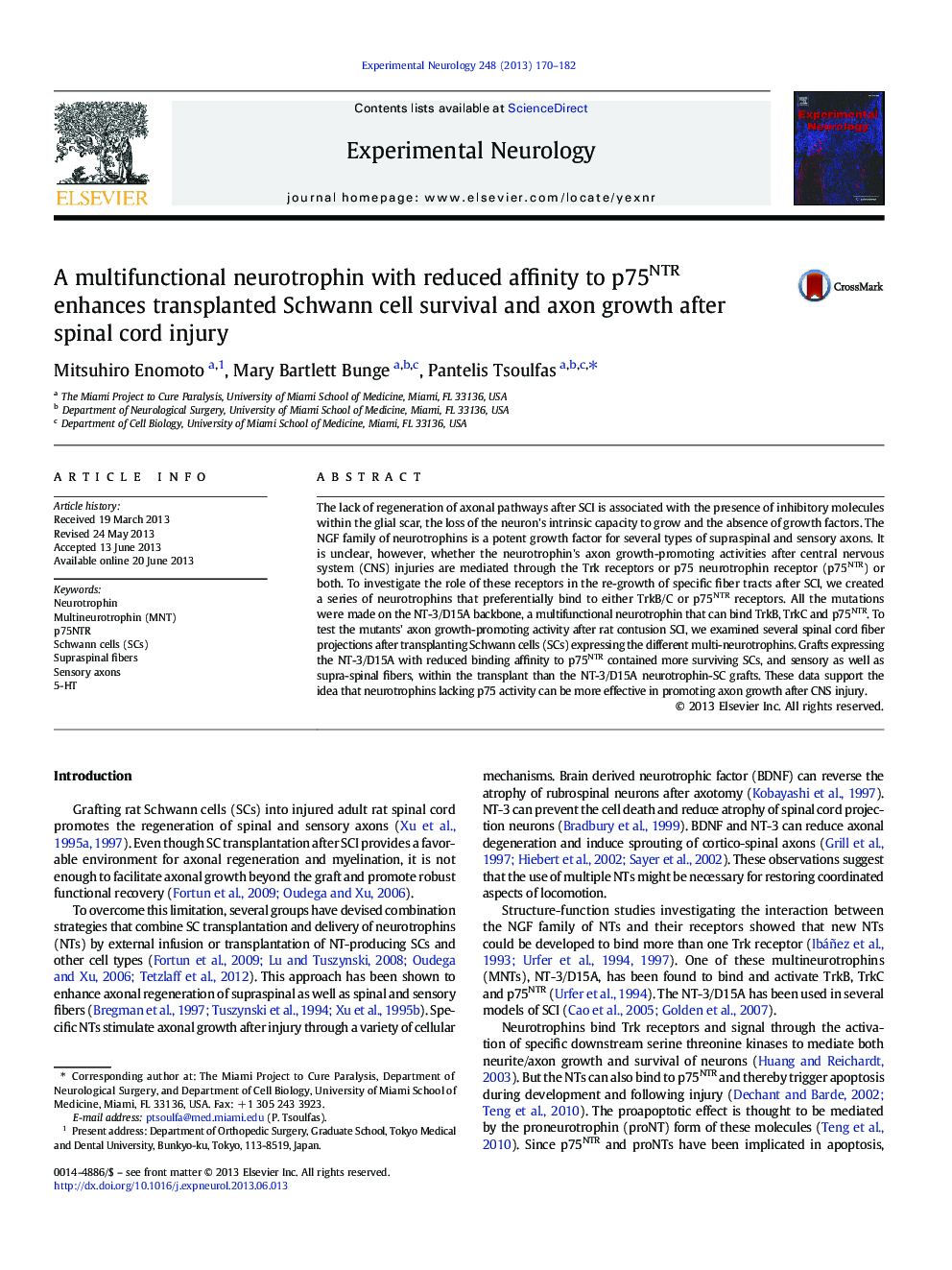| Article ID | Journal | Published Year | Pages | File Type |
|---|---|---|---|---|
| 6018061 | Experimental Neurology | 2013 | 13 Pages |
â¢Generation of a multineurotrophin (MNT) that binds mainly to the Trk receptors and not to p75NTRâ¢Better survival of SCs secreting MNTs that do not bind to p75NTR in a contusion model of rat SCIâ¢More myelinated and regenerating axons in the SC transplants secreting MNTs that have reduced affinity for p75NTR
The lack of regeneration of axonal pathways after SCI is associated with the presence of inhibitory molecules within the glial scar, the loss of the neuron's intrinsic capacity to grow and the absence of growth factors. The NGF family of neurotrophins is a potent growth factor for several types of supraspinal and sensory axons. It is unclear, however, whether the neurotrophin's axon growth-promoting activities after central nervous system (CNS) injuries are mediated through the Trk receptors or p75 neurotrophin receptor (p75NTR) or both. To investigate the role of these receptors in the re-growth of specific fiber tracts after SCI, we created a series of neurotrophins that preferentially bind to either TrkB/C or p75NTR receptors. All the mutations were made on the NT-3/D15A backbone, a multifunctional neurotrophin that can bind TrkB, TrkC and p75NTR. To test the mutants' axon growth-promoting activity after rat contusion SCI, we examined several spinal cord fiber projections after transplanting Schwann cells (SCs) expressing the different multi-neurotrophins. Grafts expressing the NT-3/D15A with reduced binding affinity to p75NTR contained more surviving SCs, and sensory as well as supra-spinal fibers, within the transplant than the NT-3/D15A neurotrophin-SC grafts. These data support the idea that neurotrophins lacking p75 activity can be more effective in promoting axon growth after CNS injury.
